By Denise Mattia
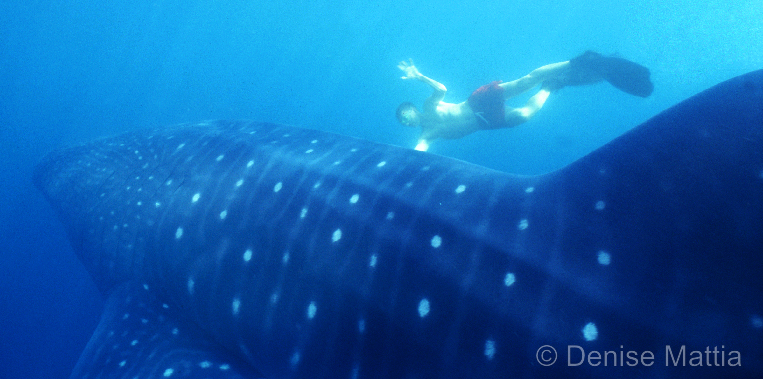 If you feel drawn to a vacation destination in Latin America it’s likely because of the sunny climes, cultural authenticity and quality activities. These reasons were noted again and again at major travel and adventure shows.
If you feel drawn to a vacation destination in Latin America it’s likely because of the sunny climes, cultural authenticity and quality activities. These reasons were noted again and again at major travel and adventure shows.
Following are areas from Mexico to South America, including some islands in the Caribbean (where the ethnic background is predominately Spanish speaking) that offer scuba diving as an alluring factor to the variety of vacation options. The list is based on first-hand experience.
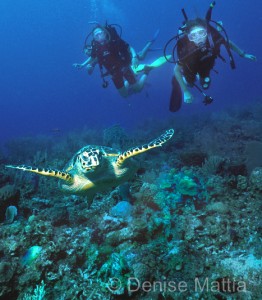 Belize: In addition to the popular sites off Ambergris Caye and Caye Caulker in San Pedro and the famous blue
Belize: In addition to the popular sites off Ambergris Caye and Caye Caulker in San Pedro and the famous blue 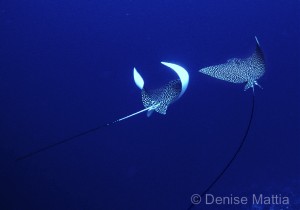 hole, which lies 60 miles from Belize City, other top-rated vacation spots include Hopkins and Placencia. Transfers are available from the Hopkins airstrip to the Hamanasi Resort in Dangrigia, the closest mainland resort to the legendary Glover’s Reef. In the south, Robert’s Grove is located on the Placencia Peninsula in proximity to Gladden Spit, where from April to June whale sharks come to feast and spawn. Reef Conservation International offers working scuba trips, which include diving in the pristine Sapodilla Cays, off Punta Gorda. Southbound flights leave daily from Belize City to Dangriga, Placencia and Punta Gorda.
hole, which lies 60 miles from Belize City, other top-rated vacation spots include Hopkins and Placencia. Transfers are available from the Hopkins airstrip to the Hamanasi Resort in Dangrigia, the closest mainland resort to the legendary Glover’s Reef. In the south, Robert’s Grove is located on the Placencia Peninsula in proximity to Gladden Spit, where from April to June whale sharks come to feast and spawn. Reef Conservation International offers working scuba trips, which include diving in the pristine Sapodilla Cays, off Punta Gorda. Southbound flights leave daily from Belize City to Dangriga, Placencia and Punta Gorda.
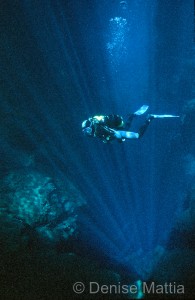 Brazil: One of the most beautiful fresh water cave systems lies inland at
Brazil: One of the most beautiful fresh water cave systems lies inland at 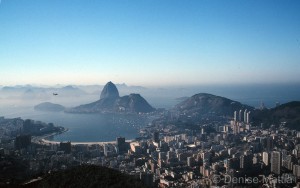 Bonito and Jardim in Mato Grosso do Sul. Here, you can scuba dive under a waterfall and rappel 240’ into a sinkhole to meander in sapphire-blue water through giant, cauliflower- and cone-shaped stalactites and stalagmites. There’s plenty of salt-water diving off the coast at Buzios, north of Rio de Janeiro and at Abrolhos.
Bonito and Jardim in Mato Grosso do Sul. Here, you can scuba dive under a waterfall and rappel 240’ into a sinkhole to meander in sapphire-blue water through giant, cauliflower- and cone-shaped stalactites and stalagmites. There’s plenty of salt-water diving off the coast at Buzios, north of Rio de Janeiro and at Abrolhos. 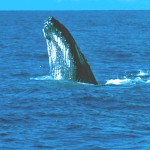 Wreck dives are plentiful in the clear waters off the towns of Recife and Salvador. At the north-east tip of Brazil, the archipelago of Fernando de Noronha is renowned for the marine life surrounding the 21 islands, while in the south at Arrial do Cabo, cold currents from Patagonia carry nutrients that attract whales and large fish.
Wreck dives are plentiful in the clear waters off the towns of Recife and Salvador. At the north-east tip of Brazil, the archipelago of Fernando de Noronha is renowned for the marine life surrounding the 21 islands, while in the south at Arrial do Cabo, cold currents from Patagonia carry nutrients that attract whales and large fish.
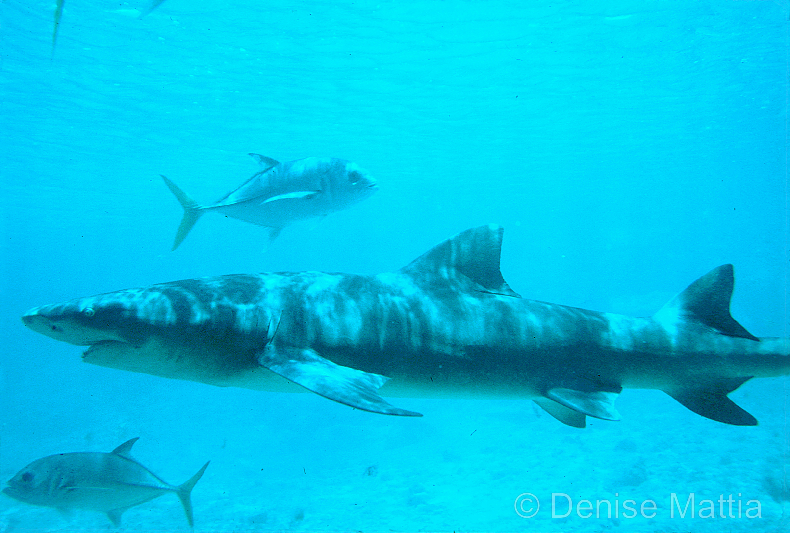 Costa Rica: Some of the world’s great pelagic fish are found at Cocos Island, located 300 miles southwest of Puntarenas. Available only by live-aboard boat, you will need several days here. Although sites off the Caribbean side of the country are now available, most local diving is from the Pacific coast.
Costa Rica: Some of the world’s great pelagic fish are found at Cocos Island, located 300 miles southwest of Puntarenas. Available only by live-aboard boat, you will need several days here. Although sites off the Caribbean side of the country are now available, most local diving is from the Pacific coast.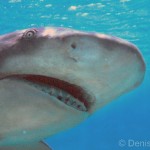 Bill Beard and his staff know the reefs and can take vacationers to where southern stingrays, schooling fish, white-tip sharks, bull sharks and manta rays can be found.
Bill Beard and his staff know the reefs and can take vacationers to where southern stingrays, schooling fish, white-tip sharks, bull sharks and manta rays can be found.
Cuba: Because of the U.S. embargo against Cuba, there are only German-based PADI centers on the island. Most Cuban Instructors are certified at SSI, ACUC or CMAS facilities in the Dominican Republic.
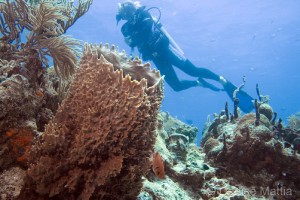 Dominican Republic: There are noteworthy freshwater caves in Cabrera, into which divers can penetrate 1000 feet and exit into freshwater pools that contain a top layer of sulfuric acid caused by decaying trees (the acid shines metal including teeth fillings). In the ocean, encounters with
Dominican Republic: There are noteworthy freshwater caves in Cabrera, into which divers can penetrate 1000 feet and exit into freshwater pools that contain a top layer of sulfuric acid caused by decaying trees (the acid shines metal including teeth fillings). In the ocean, encounters with 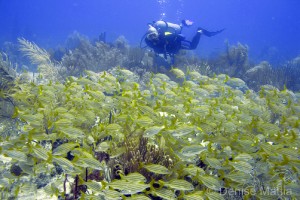 large schools of fish, nurse sharks, eagle- and stingrays are frequent. Sea plumes and orange elephant ear sponges encrust soft and hard coral formations. Sites are located in the north at Sosua and northeast at Las Terrenas and in the south at Boca Chica and Del Este National Park. The latter two are accessible from La Romana-Bayahíbe. If you favor wreck diving, several lie off the coast of Isla Saona.
large schools of fish, nurse sharks, eagle- and stingrays are frequent. Sea plumes and orange elephant ear sponges encrust soft and hard coral formations. Sites are located in the north at Sosua and northeast at Las Terrenas and in the south at Boca Chica and Del Este National Park. The latter two are accessible from La Romana-Bayahíbe. If you favor wreck diving, several lie off the coast of Isla Saona.
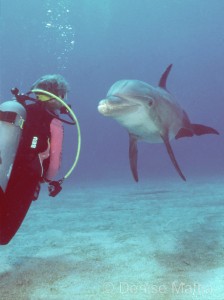 Honduras: Tight clusters of coral polyps coat walls, fissures and pinnacles, colorful sponges filter plankton from the water and sunken ships lie on reefs, holding sufficient excitement to bring you back to the three major islands of Roatán, Utila and Guanaja, and to Cayos Cochinos, two of the largest islets of the 60 cays that form the Honduran Bay Archipelago (www.bayislandstourism.com). Larger fish — Nassau and black groupers, turtles, schools of tuna and jacks and an occasional shark — often cruise along the walls. A special experience is the dolphin interaction at Anthonys Key in Roatán (www.anthonyskey.com), where snorkelers and divers can swim with the bottlenose variety.
Honduras: Tight clusters of coral polyps coat walls, fissures and pinnacles, colorful sponges filter plankton from the water and sunken ships lie on reefs, holding sufficient excitement to bring you back to the three major islands of Roatán, Utila and Guanaja, and to Cayos Cochinos, two of the largest islets of the 60 cays that form the Honduran Bay Archipelago (www.bayislandstourism.com). Larger fish — Nassau and black groupers, turtles, schools of tuna and jacks and an occasional shark — often cruise along the walls. A special experience is the dolphin interaction at Anthonys Key in Roatán (www.anthonyskey.com), where snorkelers and divers can swim with the bottlenose variety.
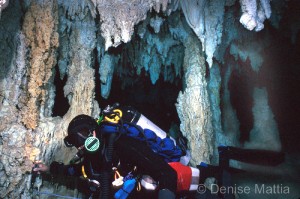 Mexico: Different from the cave formations in Brazil, amazing stalactites and stalagmites in flooded sinkholes (cenotes) snake inland from Acumal in the Yucatan. One can never stop extolling the virtues of diving in labyrinths of icicle-shaped formations — or the Great
Mexico: Different from the cave formations in Brazil, amazing stalactites and stalagmites in flooded sinkholes (cenotes) snake inland from Acumal in the Yucatan. One can never stop extolling the virtues of diving in labyrinths of icicle-shaped formations — or the Great 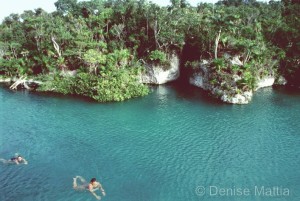 Barrier Reef, which runs almost completely unbroken from the tip of
Barrier Reef, which runs almost completely unbroken from the tip of 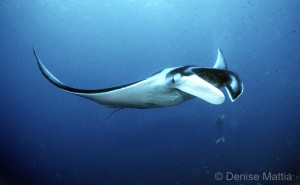 the Yucatan Peninsula to Honduras. Where the reef along the Yucatan coastline is produced by living coral growing on top of their own skeletons, the reef in the Sea of Cortez, Cabo
the Yucatan Peninsula to Honduras. Where the reef along the Yucatan coastline is produced by living coral growing on top of their own skeletons, the reef in the Sea of Cortez, Cabo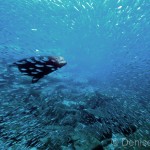 Pulmo and Los Cabos consists of mounds and boulders of volcanic substrata blanketed with encrusting sponges, corals and mollusks. The plankton-rich water draws jacks, pompano, sailfish, pacific mantas, marlin and scalloped hammerhead sharks and reef fish, in addition to 200 species of sea lions and several species of whales. Live-aboard boats and day trips from land-based operations are available .
Pulmo and Los Cabos consists of mounds and boulders of volcanic substrata blanketed with encrusting sponges, corals and mollusks. The plankton-rich water draws jacks, pompano, sailfish, pacific mantas, marlin and scalloped hammerhead sharks and reef fish, in addition to 200 species of sea lions and several species of whales. Live-aboard boats and day trips from land-based operations are available .
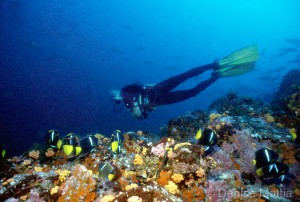 Panama: With a 50-mile isthmus spanning the Atlantic
Panama: With a 50-mile isthmus spanning the Atlantic 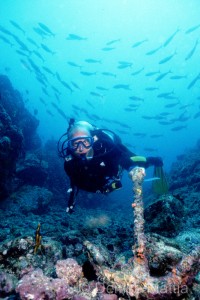 and Pacific coastlines, it’s possible to dive both oceans in one day. Coral reefs line the Atlantic side and are reached in an hour by boat from Bocas del Toro and Portobelo. The formations here have overhangs, where goliath groupers and schools of yellowtails hide. On the Pacific side, rocky volcanic pinnacles have risen from the ocean floor to form the islands of Coiba, Jicaron and Canalas. A former penal colony, the Coiba Marine Park is a favorite of both sport-fishing enthusiasts and divers for the abundance of marine life found here. It’s not unusual to see white tip and hammerhead sharks cruising the waters. Winter months bring in the occasional whale shark.
and Pacific coastlines, it’s possible to dive both oceans in one day. Coral reefs line the Atlantic side and are reached in an hour by boat from Bocas del Toro and Portobelo. The formations here have overhangs, where goliath groupers and schools of yellowtails hide. On the Pacific side, rocky volcanic pinnacles have risen from the ocean floor to form the islands of Coiba, Jicaron and Canalas. A former penal colony, the Coiba Marine Park is a favorite of both sport-fishing enthusiasts and divers for the abundance of marine life found here. It’s not unusual to see white tip and hammerhead sharks cruising the waters. Winter months bring in the occasional whale shark.
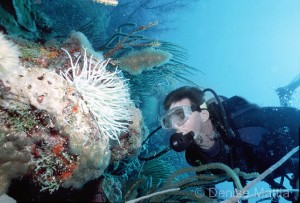 Puerto Rico: A great place to dive is the southern coast of the island, stretching from La Parguera to Ponce. The wall is pockmarked with gullies and overhangs and has been compared to the stunning Bloody Bay wall in the Caymans. Starting as spur formations at about 60’ from the surface the wall drops off sharply to 1500’. There’ll be turtles and sharks in the blue, but what’s more inspiring is this dramatic reef alive with marine life.
Puerto Rico: A great place to dive is the southern coast of the island, stretching from La Parguera to Ponce. The wall is pockmarked with gullies and overhangs and has been compared to the stunning Bloody Bay wall in the Caymans. Starting as spur formations at about 60’ from the surface the wall drops off sharply to 1500’. There’ll be turtles and sharks in the blue, but what’s more inspiring is this dramatic reef alive with marine life.
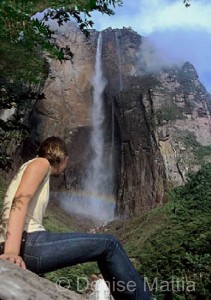 Venezuela: There are natural wonders above (Angel Falls) and below sea level (Isla Margarita and Los Roques), however, the State Department warns U.S. citizens to exercise extreme caution when traveling into this country.
Venezuela: There are natural wonders above (Angel Falls) and below sea level (Isla Margarita and Los Roques), however, the State Department warns U.S. citizens to exercise extreme caution when traveling into this country.
# # #
See also: http://www.jaxfaxmagazine.com/EditorialArchives/edit12/0612/view.html
About Denise Mattia
A writer and photographer, Denise Mattia’s works are published nationally and internationally and include all aspects of leisure travel: art , culture, resorts, spas, food and wine and sports’ activities. She's the founder of the soon to be launched Yum-Yum-Traveler, a site devoted to reviewing restaurants in addition to her travel articles from around the world. She lives and works in Manhattan, where she was born.
- Web |
- More Posts (91)
